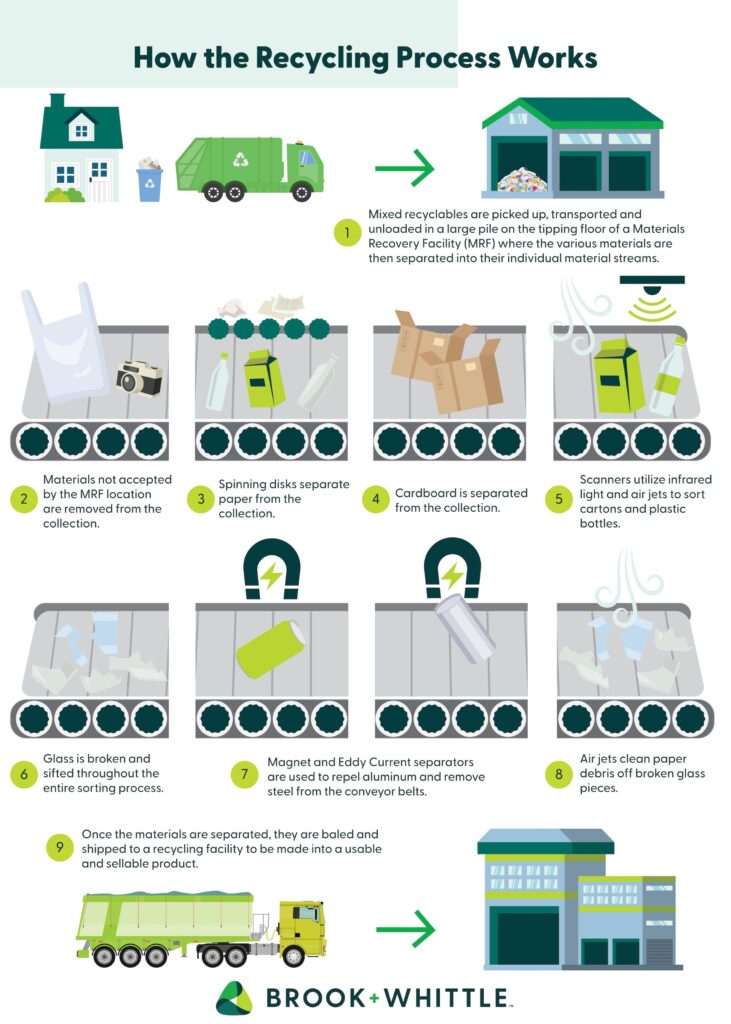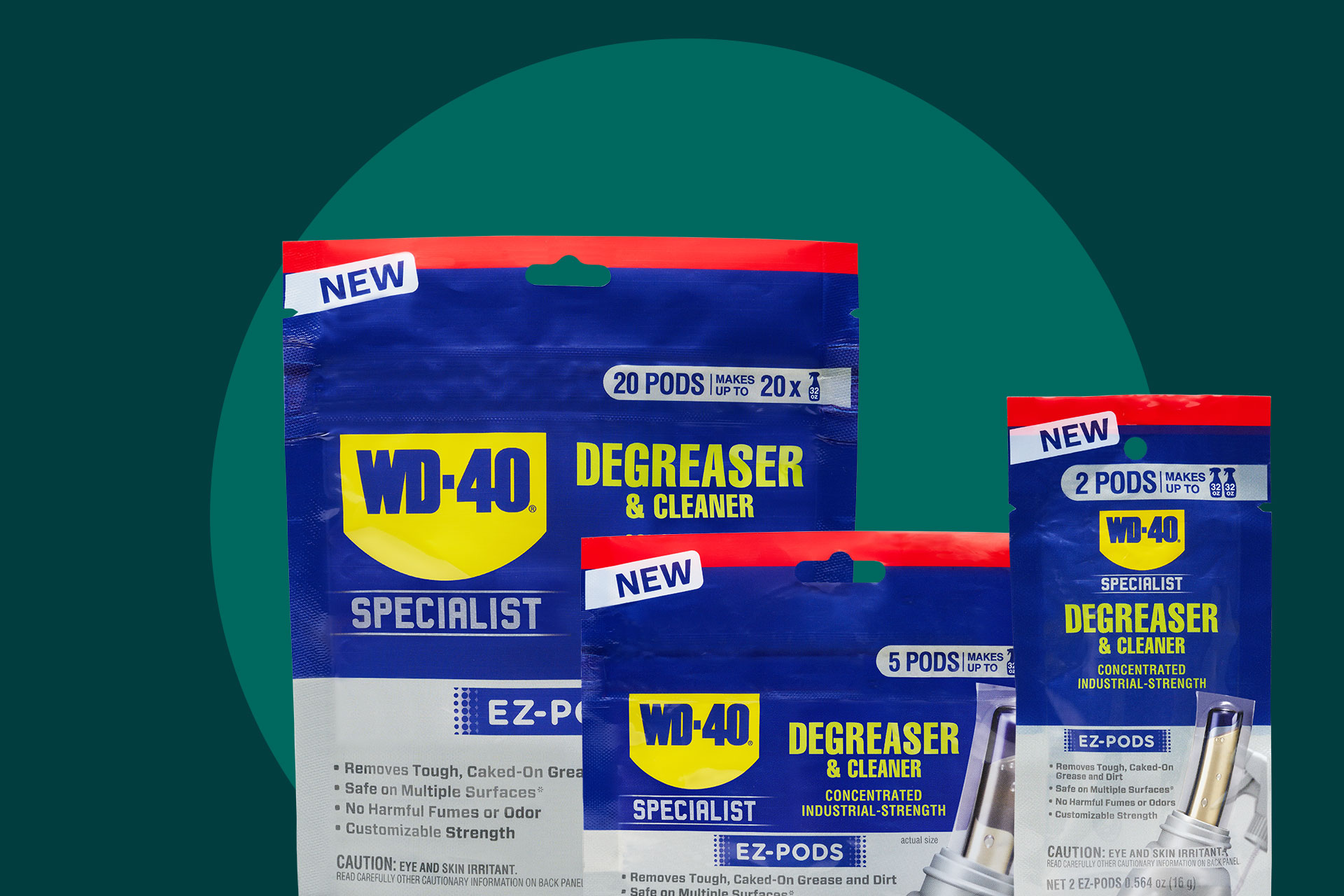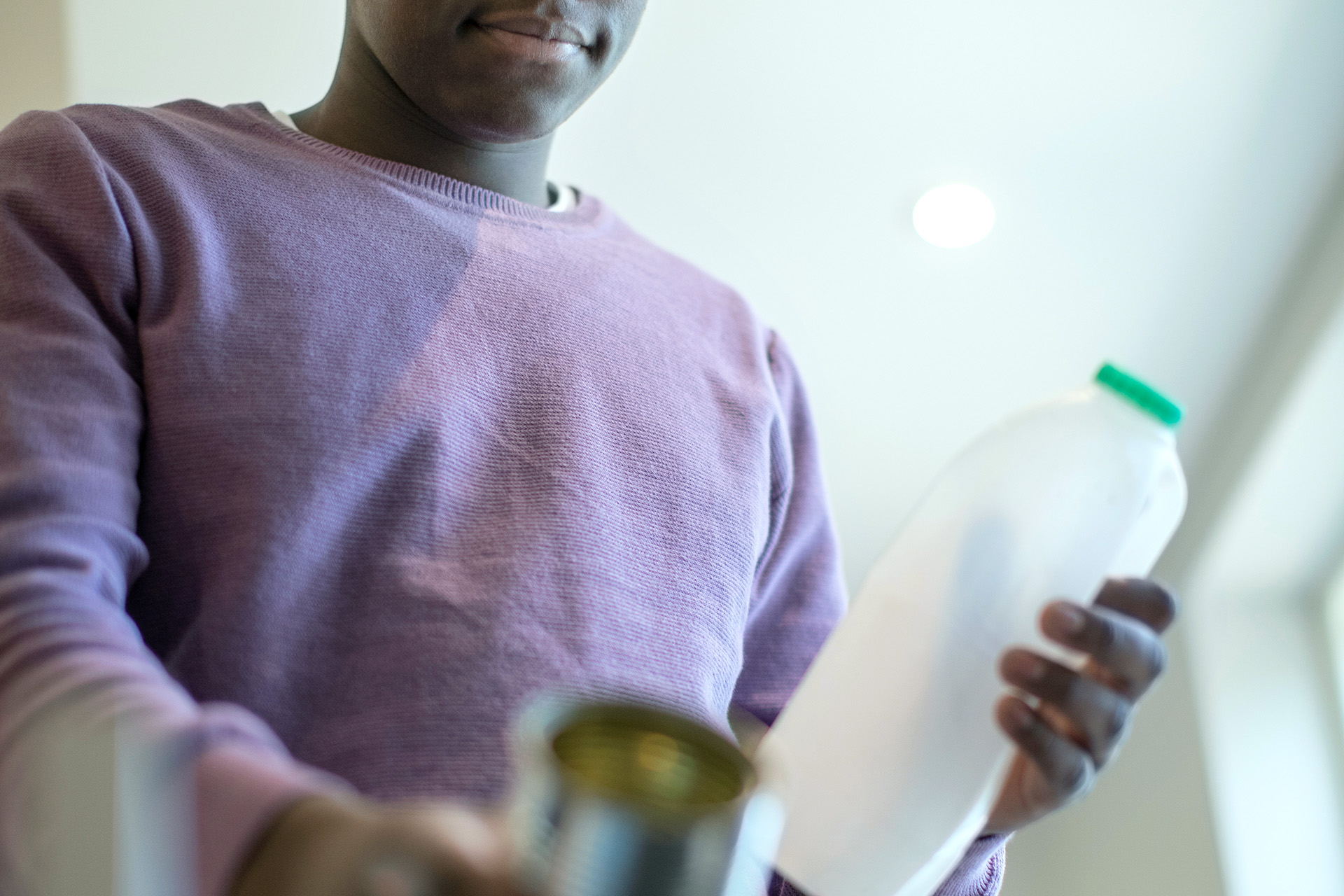In the US, most of us are familiar with curbside recycling. We participate every week, throwing our boxes, paper, plastic bottles and containers, glass, metal, and aluminum cans into blue or green bins to be picked up curbside. But, the vast majority of us don’t know what actually happens to those materials downstream.
Step 1: Collection
Collection is the first step in getting our recyclables where they need to go. Local or national haulers pick-up our curbside recyclables and take them to a Materials Recovery Facility, otherwise known as a MRF (pronounced “murf”). Access to these collection systems is one factor in determining recyclability under the FTC’s Green Guides. For a package to be recycled, 60% of consumers or communities must have access to a collection system that accepts the item.
Step 2: Separation
So, what happens when your recyclables arrive at a MRF? Once unloaded onto the tipping floor, all the various materials are separated into their individual material streams. The overall layout and technologies used vary from MRF to MRF, but most have implemented the separation technologies you can see in the graphic below. While most recyclables are mechanically separated, there is also quite a bit of human labor involved to remove trash or separate certain materials. The material moves fast across the conveyor belts, making manual sortation difficult at times. Because of this, some MRFs have started to implement the use of AI, robotics, and digital watermark scanning to aid in separation.

There are items that cause disruption in this process, as not all MRFs accept all items. Some of these items include plastic grocery bags that tangle in the spinning disks and cause downtime, small diameter items like lip balm or plastic straws that fall through the screens, and other materials that don’t have an end-market to sell into. Typically, these include films (which should go to store drop-off recycling if possible), PVC, polystyrene, and other mixed materials. Acceptance of these items highly depends on your local MRF, so it’s always best to check with your local municipality on what materials they accept and do not accept.
Once the materials are separated, they are baled and shipped to a recycling facility to be made into a usable and sellable product. To be recyclable, a material must be sorted in a MRF and must also have a market value or be supported by a mandated program.
Step 3: Recycling Processor
When the baled materials arrive at their destination, they are ready to be cleaned of remaining contaminants and processed. The goal is to return these materials back into a usable format, so that it can be manufactured again into a new aluminum can, plastic bottle, or corrugated box. In some cases, the materials can be used in the same or similar application. In others, the material may not be comparable with non-recycled materials, so they are downcycled and used to make various products such as asphalt, in the case of recovered glass, or carpeting or decking, in the case of plastics. That said, the goal should always be to recycle the material back into the same product, thereby closing the loop and ensuring that our packaging materials never become waste.
Step 4: Demand
The last piece of the puzzle is a strong demand for products containing recycled materials. Without demand, there is no point in collection, separation or manufacturing new products. There is a growing demand from consumers for more environmentally friendly products and packaging which drives brand owners and the rest of the supply chain. We will continue to see increasing demands for recycled materials, which is why it’s vital to design products that are recyclable and bolster our recycling infrastructure and education.
What should I do?
Keep in mind, recycling doesn’t end at the bin. Although a lot of household items can be recycled in your curbside bin, some materials, like grocery bags, e-commerce airbags, and other packaging films require store-drop off. In some states, select materials are recycled through deposit return systems, where glass or aluminum cans are returned to get a deposit back.
As consumers, it’s best to avoid wishful recycling, which has been coined “wishcycling”. This is when consumers put non-recyclable items in the recycling bin with the hope they will be recycled. Problematic plastics and other materials that aren’t accepted are a source of contamination for the recycling system. That’s why it’s important to check with your local municipality to find out what materials are currently accepted.
As more consumers get educated on the true downstream impact of their purchasing decisions, brands need to be asking these questions:
- Do 60% of consumers or communities have access to a collection system that accepts your packaging?
- Is it able to be properly sorted in a MRF or other recovery system and effectively recycled?
- Is there demand that supports the recycling of your packaging material?
If you’re not sure of the answer to the questions above, let’s find it together. As your print partner, we’ll help you pick the solution that balances performance, aesthetics, cost, and sustainability. Let’s make the future more vibrant together, one label at a time.


